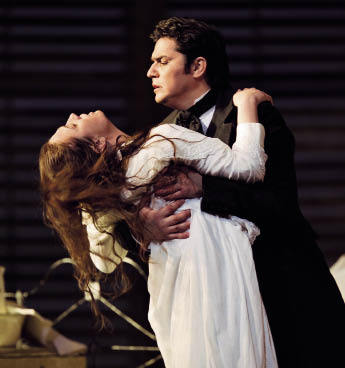La Traviata
Royal Opera House, in rep until 24 May; and with cast change 8 July to 17 July
This year, when operatic fare in the UK has become sparser and less adventurous than at any time since I remember, it’s no surprise that the old stand-bys should be wheeled out regularly. Top scorer in 2010, without question, has been La Bohème, with productions ranging from the brilliantly resourceful minimalism of The Cock in Kilburn, which has been running nightly since early December, to the elaborate squalors of the Royal Opera’s quarter-century-old production, which improves with every advance into decrepitude; with many other versions in between.
Some way behind, no doubt thanks partly to the taxing nature of the title role, is La Traviata, though the Royal Opera is loyal enough never to let a season go by without reviving it, and this season there are two runs, with different casts. So what people most like going to — assuming that that is the basis for the selection — is operas where you spend the evening watching, and more important, hearing a young woman die. That is hardly a new insight, and anyway the exciting sounds which expiring women make when awarded the poignant or heroic beauties of music have always been at the centre of this art form. Theories and speculations about why we find them such a turn-on have proliferated, without any of them achieving much plausibility, not even the ones that do the audience most discredit — I mean the views that we love torture of one kind or another so long as it looks and sounds exquisite.
My bewilderment about this whole subject was renewed, even refreshed, by the latest revival of Richard Eyre’s production of Traviata at the Royal Opera.








Comments
Join the debate for just £1 a month
Be part of the conversation with other Spectator readers by getting your first three months for £3.
UNLOCK ACCESS Just £1 a monthAlready a subscriber? Log in